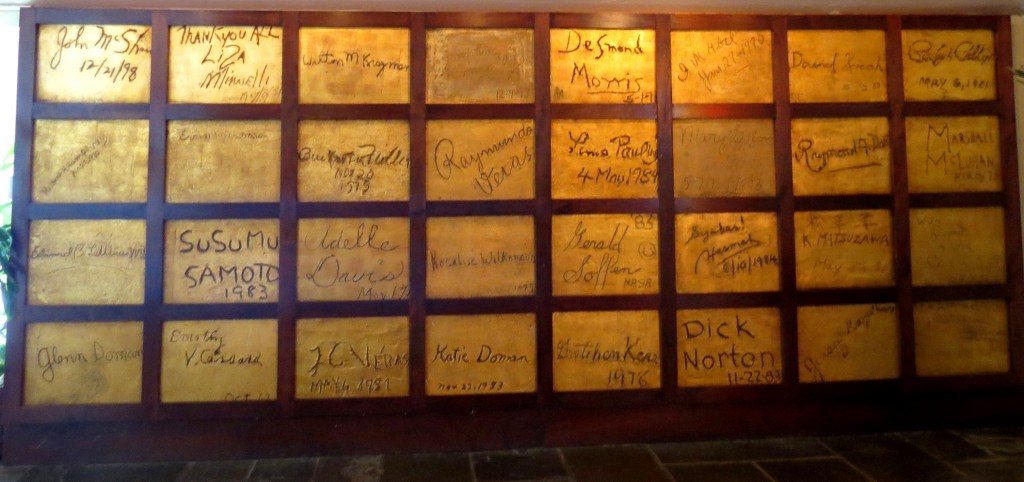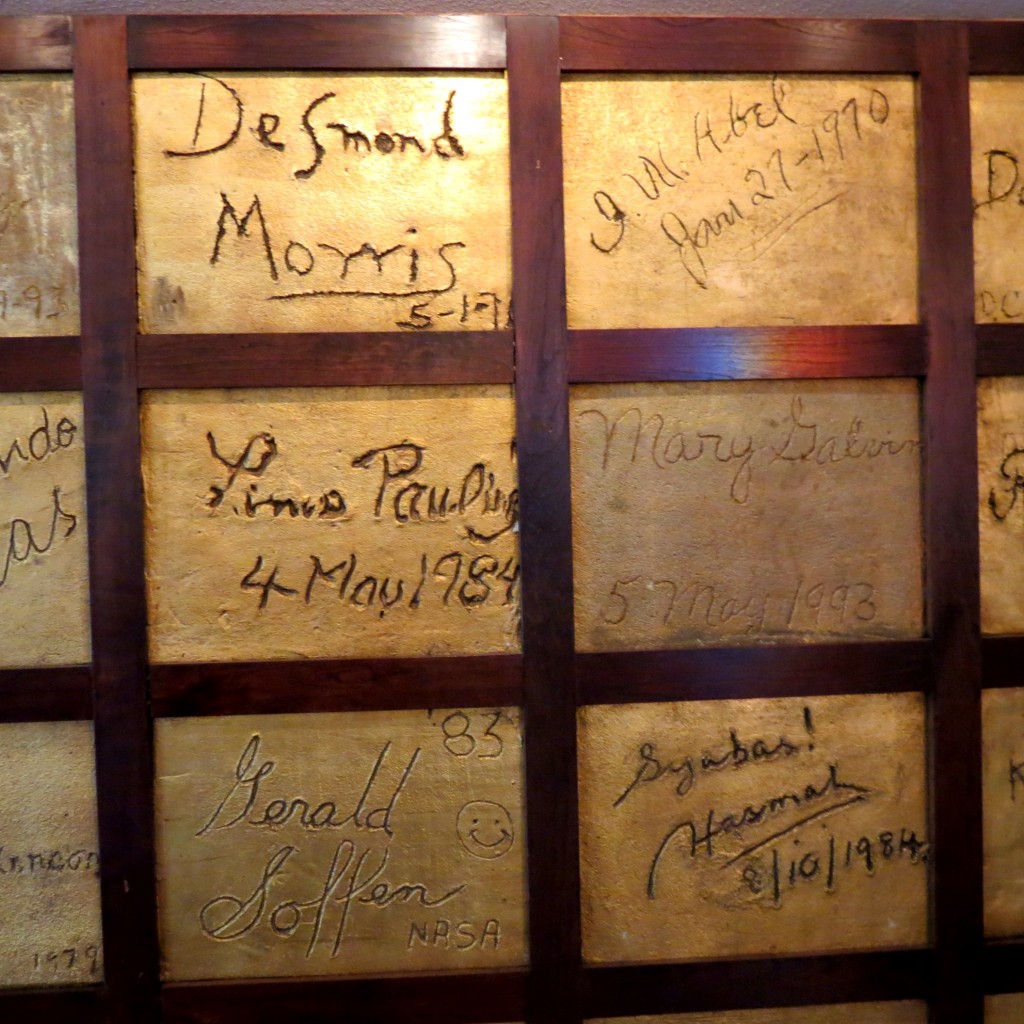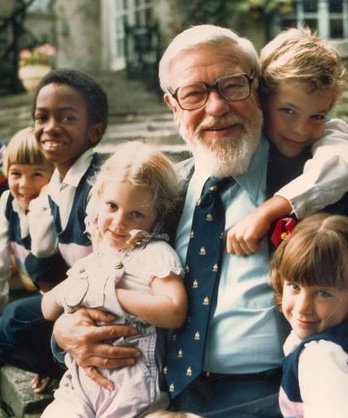Glenn Doman founded The Institutes For The Achievement of Human Potential in 1955. Glenn’s groundbreaking work with brain-injured children secures his position as the grandfather of ‘Neurodevelopmental Therapy’, a term created by practitioners who use an altered version of Glenn’s work.
The Institutes medical and clinical staff around the world must be members of The International Academy of Child Brain Development to be qualified to use The Institutes and Glenn Doman’s methods.
The extraordinary line up of Glenn Doman’s collaborators – both past and present (since Glenn’s passing in 2013), and the phenomenal results achieved by children on The Institutes program over the past 50 years, makes the authentic IAHP program the absolute ultimate in therapy for children with neurological conditions, or brain injuries.
One only has to read an edition of The Institutes Magazine – the ‘In Report’ – to see just how impressive the results really are. Blind children achieving sight, deaf children beginning to hear, immobile children moving their bodies for the first time – all because of the work of their own parents, guided by Glenn Doman’s team.
Grow Foundation is proud to be associated with The Institutes in our quest to help parents to access the best help and the best possible results for their children. Some of the results achieved here in Australia are published on our Success Stories page as well as a series of interviews we are conducting with parents on our blog roll.
THE INSTITUTES COLLABORATORS INCLUDE THE FOLLOWING:

This Golden Wall in the Auditorium at The Institutes campus in Philadelphia displays the signatures of many extraordinary collaborators.
The Institute for Functional Medicine
www.functionalmedicine.org
A very notable supporter of the work of The Institutes is Dr. Jeffrey Bland PhD, FACN, FACB, Founder of The Institute for Functional Medicine.
Dr Bland authored an article in ALTERNATIVE THERAPIES, nov/dec 2008, VOL. 14, NO. 6 21. The Article – AUTISM: ASKING THE RIGHT QUESTIONS TO FIND THE RIGHT ANSWERS – includes the following:
“Upon reflection, I recognize that the program at the Institutes for the Achievement of Human Potential is the quintessential functional neurology program. It shares all the concepts that underlie the principles of the Institute for Functional Medicine. Within its formalization and therapies may lie the solution to autism.”
Read the full article here: Autism- Asking the Right Questions to Find the Right Answers
Dr. Raymundo Veras
Dr Raymundo Veras was a notable supporter and published the book Children of Dreams, Children of Hope.
This is the story of Dr. Raymundo Veras, a brilliant Brazilian surgeon and his journey into the world of brain-Injured children. After Dr. Veras’s son, Zé Carlos was injured in a diving accident, Dr. Veras dedicated his life to fixing his son’s injury. That devotion led him to The Institutes for the Achievement of Human Potential in Philadelphia, where he learned from Glenn Doman and the staff, how to help brain-injured children. From there he returned to Brazil and began treating many more children. His success with the children the world has called ‘Down syndrome’ led to the first successful methods to treat their problems. This book is the story of Dr. Veras’ second life and the first chance for wellness for many of the world’s children.
Raymond A. Dart, M.D.
Dr. Raymond A. Dart was an anatomist and anthropologist, best known for his 1924 discovery of a fossil of extinct hominids in South Africa. Naming the skull Australopithecus africanus, he established it as a new genus and species. He wrote of his discovery in Adventures with the Missing Link.
Professor Dart taught at the University of the Witwatersrand in South Africa from 1923 to 1958. In 1960, he wrote to Glenn Doman after reading The Institutes first report on the treatment of brain-injured children. Referring to the stages of neurological development mapped out by The Institutes, he wrote, “The development of the individual does indeed recapitulate the evolution of the species.”
Glenn met Raymond Dart in 1966, during The Institutes expedition to study the Bushmen of the Kalahari Desert and other African tribes. Raymond Dart and his wife, Marjorie, then came to The Institutes, where he became chairman of The Institute of Man, holding the Chair of Anthropology created through a grant from the United Steelworkers of America.
For over twenty years, the Darts made The Institutes their home. Professor Dart continued his scientific research on man’s development and his life-long role as both student and teacher, returning to South Africa each year for several months.
Temple Fay, M.D.
Dr. Temple Fay held the chair of neurosurgery and neurology at Temple University Medical School. Today hundreds of thousands of people are alive because of his invention of human refrigeration. Dr. Fay personally created the first two hypothermia machines. One is now at the Smithsonian Institute in Washington, D.C., and the other is in the British Museum in London.
Glenn Doman first met Dr. Fay in 1941. After the Second World War, they worked together intensively, and Glenn Doman became Temple Fay’s principal student. They opened a private practice together at Norwood, and in 1955 Glenn Doman founded the Rehabilitation Center at Philadelphia. Dr. Fay was the chief medical consultant of what later became The Institutes for the Achievement of Human Potential.
Many of The Institutes principles of brain growth and development are built upon Dr. Fay’s discoveries.
Edward B. LeWinn, M.D.
Dr. Edward LeWinn, a respected internist at Einstein Hospital, first learned of The Institutes work in 1957. He referred one of his patients who had suffered a stroke to the Rehabilitation Center at Philadelphia (the original name of The Institutes). Thinking that the Center was a nursing home, Dr. LeWinn was astonished when Glenn Doman helped this elderly patient walk again.
As the years went by, Dr. LeWinn became more and more involved with The Institutes. When he retired, he became a full-time member of The Institutes medical staff. With Glenn Doman, Dr. LeWinn helped to pioneer The Institutes detoxification program. He published many articles about The Institutes work and wrote a book entitled Human Neurological Organization. This was the first book written for the medical community that explained the scientific rationale behind The Institutes work.
Evan Welling Thomas, M.D.
Dr. Evan Thomas was an outstanding public health physician who was credited with helping to create the original protocol to eliminate syphilis in the United States.
He joined The Institutes as a full-time volunteer member of the medical staff in 1964. Dr. Thomas was the brother of Norman Thomas, who ran a number of times as a candidate for President of the United States. Dr. Thomas worked alongside Glenn Doman and Dr. Edward LeWinn. He authored Brain-Injured Children, the second book ever published for the medical community explaining The Institutes work.
Even in his eighties, Dr. Thomas always remained young in spirit. The Evan Thomas Institute for Early Development is named in his honor.
Roselise Wilkinson, M.D.
Dr. Roselise Wilkinson came to The Institutes in 1964 seeking help for her eldest son and never really left. She graduated from Temple University Medical School at a time when few women studied or practiced medicine. After joining The Institutes staff, she served as The Institutes medical director from 1964 to 1998. In addition, she was a member of the Xingu Expedition to Brasil Centrale in 1969.
Dr. Wilkinson was involved in important research projects at The Institutes, including respiratory treatment and Oxygen Enrichment. She developed the detoxification program and was the first to implement it. This is the same program used today at The Institutes.
Dr. Wilkinson especially enjoyed her involvement with the children and their families. She took great care to teach parents well, so that they clearly understood the goal and technique of each program they undertook with their child. She enjoyed a long career as medical director and served on The Institutes board of directors.
 Linus Pauling and Ava Helen Pauling
Linus Pauling and Ava Helen Pauling
Ava Helen Pauling was the wife of Dr. Linus Pauling. The Paulings were friends of The Institutes up to the time of their deaths. Linus Pauling is the only man in history who has won two Nobel Prizes entirely by himself, not shared with others. One prize was for his scientific work in chemistry. The other prize was for peace, for his battle to rid the earth of atomic weapons.
Mrs. Pauling was a human rights activist who was involved in different social movements, including women’s rights, racial equality, and world peace. She and her husband worked for nuclear disarmament, to check the proliferation of nuclear weapons, and to prevent the atmospheric testing of atomic bombs. Each year since her death in 1981, The Institutes has presented a peace lecture in her memory.
NASA
Dr. Ralph Pelligra, chief medical officer of NASA-Ames at Moffett Field, California, has been on The Institutes board of directors for many years and has served as chairman of the board. Dr. Pelligra and NASA have helped The Institutes staff to answer questions using their space-age technology in ways that technology has never been used before.
Dr. Ralph Pelligra’s centrifuge project in 1976 was followed by collaboration with The Institutes to establish normative respiratory data, a modified space helmet for underwater use, and a 1978 joint conclave in Palo Alto, California. By 1979, the united efforts of NASA and the Institutes had blossomed into a strong relationship that held great promise for the world’s brain-injured children and possibly all children.
In 1979, NASA’s immense engineering acumen, imagination, and technical skill focused upon two of the most stubborn problems faced by the Institutes’ hurt children: blindness and immobility. While stunning gains had already been made, the staff realized that these advances could be accelerated with the use of devices that gave the necessary stimulation with increased frequency, intensity, and duration.
Working closely with The Institutes staff, the NASA research team, headed by Herbert C. Vykukal, introduced a vehicle for initial crawling (VIC device) in February 1979. In action, the device resembled a hovercraft moving seemingly without friction over water. When a child made any crawling movement, the immediate positive feedback encourages repetition of the movement. The reduced friction allowed the child to achieve purposeful mobility.
Also in 1979, the Vision Project culminated in a device brought to the Institutes in March by Dr. Pelligra. It combined auditory stimulation synchronized with bright flashes of light, worn as a fully computerized apparatus containing a headset and goggles. The success of these projects consolidated the relationship between scientists and human developmentalists.
NASA and The Institutes planned future projects, and the relationship between scientists and human developmentalists was consolidated.
Adelle Davis
Adelle Davis, an author and nutritionist, shone a spotlight on the importance of good nutrition with her books, including Let’s Get Well and Let’s Have Healthy Children. With the assistance of Adele Davis, the staff of The Institutes organized a nutrition program specifically designed to help each child achieve optimum health. This program, which is carried out at home by the parents, has been effective in helping chronically ill children to become healthy and physiologically strong. The staff continues to modify the program based on current information, including awareness of food sensitivities and allergies.
Dr. Denise Malkowicz
Dr. Malkowicz is a neurologist specializes in the study of epilepsy. She researched and wrote the article “Rehabilitation of Cortical Visual Blindness,” which was published in the International Journal of Neuroscience. The technique of visual stimulation used to create vision has allowed blind children to progress to seeing and even reading. Dr. Malkowicz has also been involved in The Institutes work in biofeedback and neurofeedback.
Dr. Wayne Matson
Dr. Wayne Matson, a consultant in analytical chemistry, published the results of his study that showed many of the changes in body chemistry produced by The Institutes program of neurological organization. A particularly interesting finding from the pretreatment blood and urine samples was a high level of oxidative stress in the injured brain. This imbalance was often corrected by The Institutes program, which included masking.
Dr. Mihai Dimancescu
Dr. Mihai Dimancescu, a prominent neurosurgeon, updated the information in Dr. Edward LeWinn’s book Coma Arousal. With Glenn Doman and Drs. Wilkinson and Pelligra, he co-authored a paper on this subject [“The Effect of Intense Multisensory Stimulation on Coma Arousal and Recovery” (Neuropsychological Rehabilitation, 1993)]. Dr. Dimancescu has served on The Institutes board of directors and is currently the chairman of the board.
Dr. George Goodheart
In 1981 Dr. Jerold Morantz, an applied kinesiologist, became involved in The Institutes work with brain-injured children and began to teach The Institutes staff about AK. Shortly thereafter, Glenn Doman was invited to speak at the annual convention of AK practitioners. Dr. George Goodheart, the founder of applied kinesiology, spoke and taught effective techniques at the annual meeting of the World Organization for Human Potential at The Institutes. Dr. Walter Schmitt, a diplomate in neurology, became involved and an important member of the team whose focus is on the structure and function of the body.


